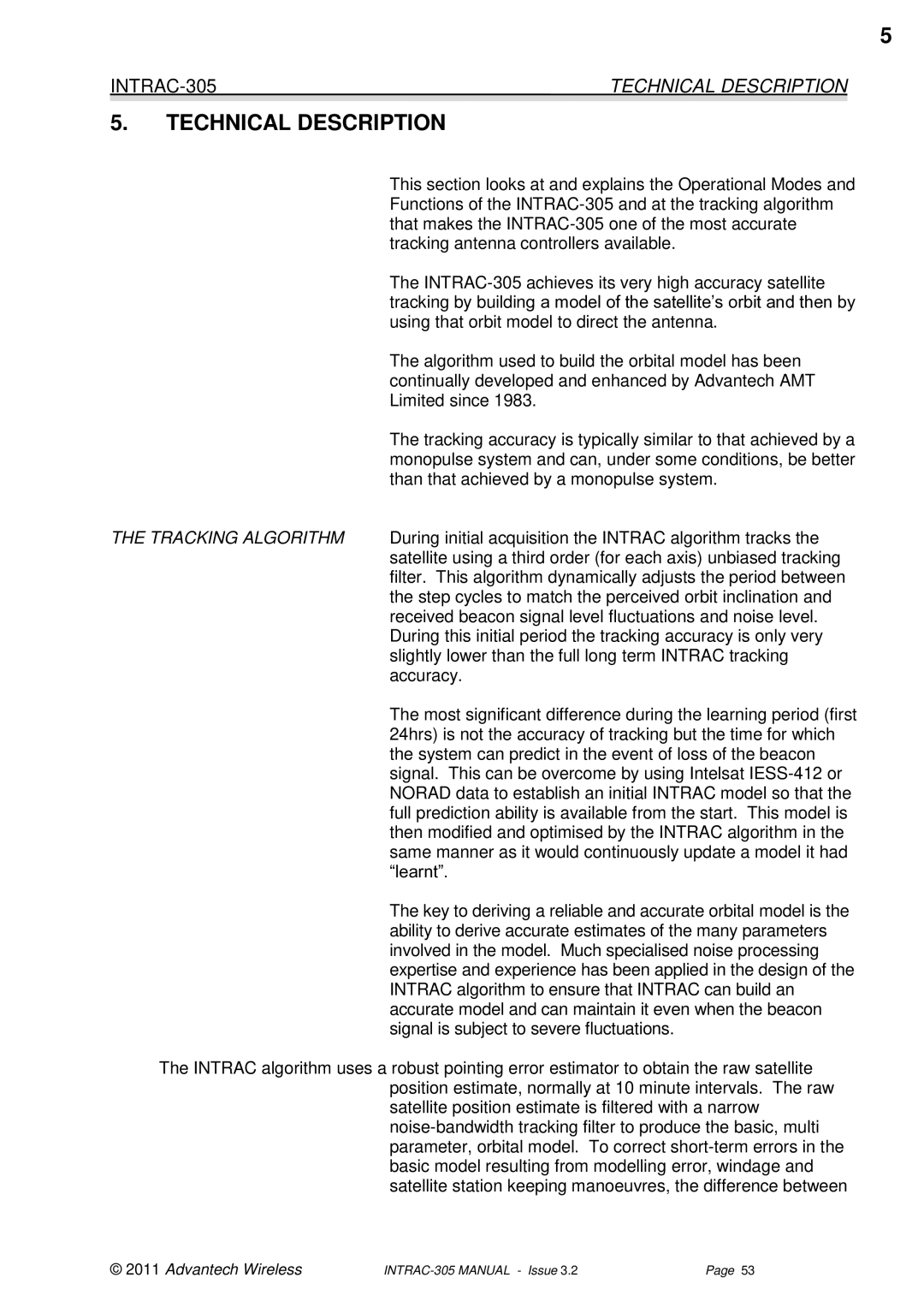
5
| TECHNICAL DESCRIPTION |
5.TECHNICAL DESCRIPTION
This section looks at and explains the Operational Modes and Functions of the
The
The algorithm used to build the orbital model has been continually developed and enhanced by Advantech AMT Limited since 1983.
The tracking accuracy is typically similar to that achieved by a monopulse system and can, under some conditions, be better than that achieved by a monopulse system.
THE TRACKING ALGORITHM During initial acquisition the INTRAC algorithm tracks the satellite using a third order (for each axis) unbiased tracking filter. This algorithm dynamically adjusts the period between the step cycles to match the perceived orbit inclination and received beacon signal level fluctuations and noise level. During this initial period the tracking accuracy is only very slightly lower than the full long term INTRAC tracking accuracy.
The most significant difference during the learning period (first 24hrs) is not the accuracy of tracking but the time for which the system can predict in the event of loss of the beacon signal. This can be overcome by using Intelsat
The key to deriving a reliable and accurate orbital model is the ability to derive accurate estimates of the many parameters involved in the model. Much specialised noise processing expertise and experience has been applied in the design of the INTRAC algorithm to ensure that INTRAC can build an accurate model and can maintain it even when the beacon signal is subject to severe fluctuations.
The INTRAC algorithm uses a robust pointing error estimator to obtain the raw satellite position estimate, normally at 10 minute intervals. The raw satellite position estimate is filtered with a narrow
© 2011 Advantech Wireless | Page 53 |
